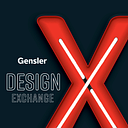Digital Meets Physical: A Paradigm Shift In Higher Education

Many industries are embracing a new reality rooted in virtual interactions. The question now for higher education is: What will the classroom of the future look like? As we make short-term decisions to respond to the global COVID-19 pandemic, we will also have a long-term opportunity to embrace disruption and reinvent the traditional learning experience. As naturally social beings, there will always be a need for schools to have a physical presence. But with many educational institutions now exploring the virtual learning environment, the time is ripe for experimenting with new ways of authentically connecting with students and creating a seamless experience between online and in-person learning so students can get the most out of their learning experience.
Today, our host Brandon Larcom sits down with Gensler experts Chuck Rudalavage, Regional Practice Area Leader for Higher Education, and Emily Fridman, Regional Director for Digital Experience Design, to explore the paradigm shift in the learning experience happening now across the globe. With Chuck’s expertise in the physical design of learning facilities and Emily’s experience creating meaningful experiences through digital solutions, we break down silos to discuss how educational institutions might embrace both a digital and physical future to offer students a comprehensive and impactful learning experience in a post-COVID world.
Over the past decade, online learning, active learning environments, and an emphasis on experiential learning have emerged on campuses across the globe. During the COVID-19 pandemic, students, faculty, and staff have been forced to quickly adapt their teaching, learning, study, and test-taking processes to adjust to a fully virtual environment. While these new skillsets and social behaviors can later be applied back to the campus, it will not be a “return to normal” when campuses re-open.

Current predictions maintain that it’s unlikely that faculty, staff, and students will return all at once. As institutions consider the potential for “rolling occupancy” and other strategies to more effectively enable safe distancing, education leaders must consider how to implement these approaches in physical environments.
Post-pandemic, we may emerge into a world with equal platforms physical and digital. Just as consumers have embraced choice in brick and mortar and online options for everything from banking to grocery shopping, educational institutions should offer students a choice for in-person and online learning. It’s not about replicating exactly what happens on a physical campus into a virtual one, but about replicating the engagement and fundamental need to connect. Rather than designing for the end-user, there will be a renewed focus on designing for the end-community. There is an opportunity to create new traditions, engagements, and celebrations online — and having fun doing so.
“I think we’re going to see a blending; hopefully, one day, a seamlessness of how we shift between digital and physical that might be an equalizer across university campuses, across community colleges, to start to give everyone access to more of that high-quality college experience.” — Emily Fridman, Gensler
We must seek new ways of creating connectedness using today’s relevant platforms and best practices to educate and entertain while building institutional affinity. Universities should understand where and how their students are already engaging online, from Instagram to TikTok to Twitch, and authentically embrace these new platforms by expanding their unique campus culture to these virtual spaces. Campus administrators should reassess tech they are already utilizing — virtual learning platforms like Blackboard — and discover new ways to use them to connect.

“…The fundamental [idea] that a higher level of education allows students to increase their economic mobility has not gone away. If anything, our world continues to get more and more complex, and we need more and more people who have the skills, have the education, to handle the types of tasks coming in our world and even those we haven’t thought of yet.” — Chuck Rudalavage, Gensler
While there’s an obvious need to augment technology infrastructure to better support a hybrid environment, there’s also a need to invest in technology to tackle the disparity that the pandemic has exposed across students with varying socio-economic backgrounds. The need to virtually learn from home has amplified the discrepancy that exists, so a return to a hybrid campus environment will require a heightened support network for students to ensure equitable access to technology and education.
“I think we’re going to see a new wave of partnerships and start-ups that are actually looking at how digital can be at the forefront of the education space and less of a companion and more of a true enabler to continue to create that opportunity for people to learn and achieve more.” — Emily Fridman, Gensler
The silver lining of this crisis is the opportunity to use the strategies we’ve learned along the way to serve as a beta test for best practices that can be applied to higher ed campuses in the future. If we take the best practices we have learned from institutions that have successfully implemented blended learning programs, harness the knowledge base within our university system, and amplify the impact for future generations of workers, this would be a true paradigm shift in higher education that would transform its trajectory for generations to come.
Subscribe to Gensler Design Exchange on Soundcloud, Apple Podcasts, iHeart Radio, Spotify, Alexa AnyPod, Google Play, Stitcher, and Libsyn — or anywhere you listen to podcasts.
As always, thanks for tuning in!
